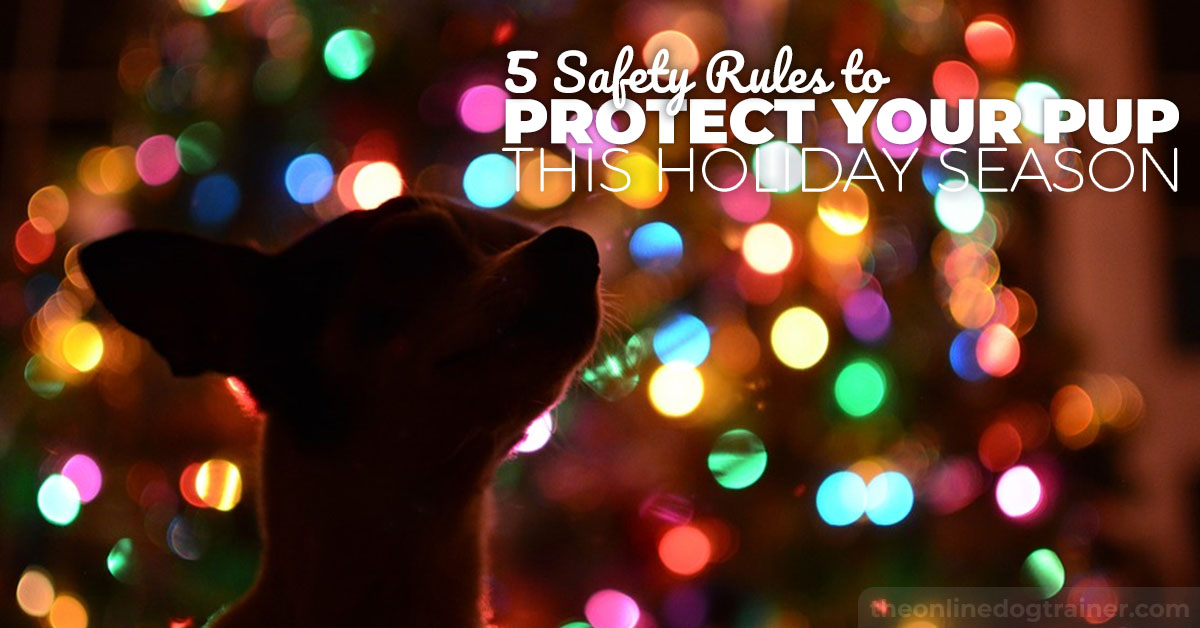
A lot changes in your household during the holiday season…
- Visitors come and go
- New decor is placed around your home
- Different food dishes are often prepared
…and while all these things might be normal to you, they can be really confusing (and stressful!) to your pup!
As we are just days away from celebrating the holidays, it’s more important than ever to set safety rules in your home regarding you dog!
What rules do you need to put in place to keep your pup safe? Keep reading to find out…
Rule #1 – Set Boundaries on How People Interact With Your Dog
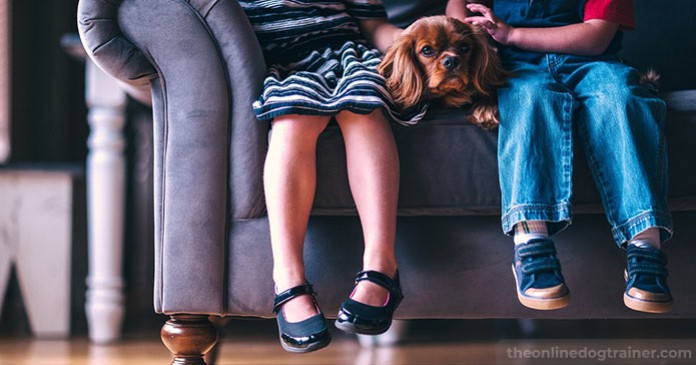
Some dogs want nothing more than to be surrounded by people who will pet and play with them. For other dogs, the thought of being in a room full of strange people is overwhelming and unnerving.
You know your dog best, so it’s your job as a pet parent to set boundaries around how your dog is interacted with.
If you have a dog who becomes nervous, cranky, or scared around people, it’s vital that you take precautions to protect your pet. Sadly, unnecessary fear and stress can cause your pup to lash out, and possibly even hurt someone as your dog is simply trying to protect himself.
Here are a few ways you can do this…
- Tell houseguests to ignore your pup. This works well if you have a dog who isn’t very reactive but who still needs to be left alone. Adults are better at following this rule, so if you have a houseful of kids coming to stay with you setting this rule might not be an option.
- Provide a safe, quiet place for your dog. I believe it’s best to never risk an accident occurring with a nervous dog, so this option is my favorite. If you’re having people over, set your pet up in a safe place (like a bedroom) where no one will bother him.
Rule #2 – Set Guidelines on What Your Pet is Allowed to Eat
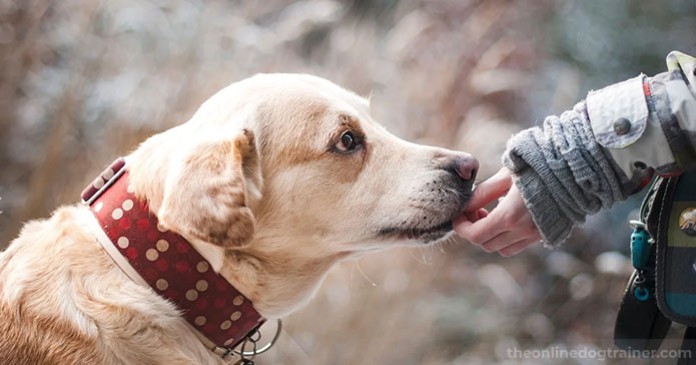
Most people have the best intentions when they go to throw your pup a treat from the dinner table. But there are many reasons why you should clearly communicate what your dog can/can’t eat to everyone who gathers around your table.
First and foremost, there are a lot of dangerous foods that can make dogs really sick. For example, chocolate can kill dogs—something that someone who is not a dog owner might not know! Or if someone throws your dog a chicken leg with the bone in it, your pup can end up with a punctured stomach or intestinal blockage.
If you’re going to allow people to give your dog treats, make a list of the foods your dog is allowed to have, such as sweet potatoes, green beans, or turkey off the bone.
Second, you may not want your dog eating people food at all—and that’s totally ok. It’s possible that your dog is overweight or has a food sensitivity. In these types of scenarios it’s important to make sure everyone knows it’s NOT ok to feed your dog and that he is on a strict diet.
Finally, you might be in the midst of training your dog and allow him to eat scraps from people at the table could be disruptive to learning proper meal time manners. After all, bad habits (such as putting a nose on the table or begging for food) can be hard to break.
Once again, in this type of situation, it’s ok to make an announcement to ensure everyone knows NOT to feed your dog.
Rule #3 – Say No to Guests Bringing Pets if Your Dog Doesn’t Like Other Animals
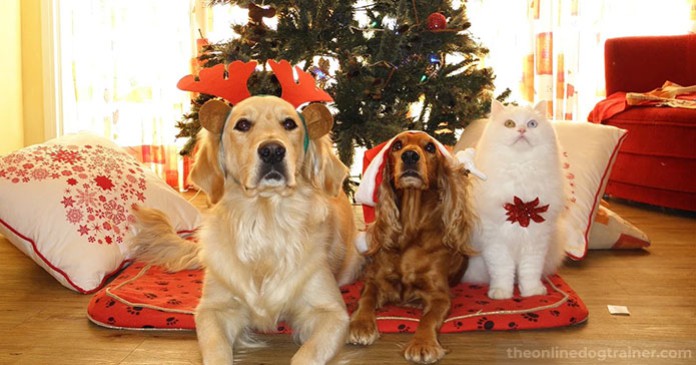
Most hosts try to be as accommodating as possible when friends and family travel for the holidays. Sometimes this means saying yes to a family bringing their cat/dog with them as they travel.
If your dog is friendly with animals, then by all means it’s ok to bring new animals into your home—as long as you introduce your pets safely and keep a watchful eye on how they interact.
However, if your dog doesn’t do well with other animals, it’s important to just say no to four legged house visitors.
The reason is simple: Your pets safety and wellness needs to be your first priority. Noone wants to deal with an injury (or even death) of a pet that could have been prevented.
Not to mention…it’s very stressful having to constantly separate animals and keep a watchful eye on them. It’s just not worth the risk and hassle.
Rule #4 – Set Up Safety Precautions Around Home Decor
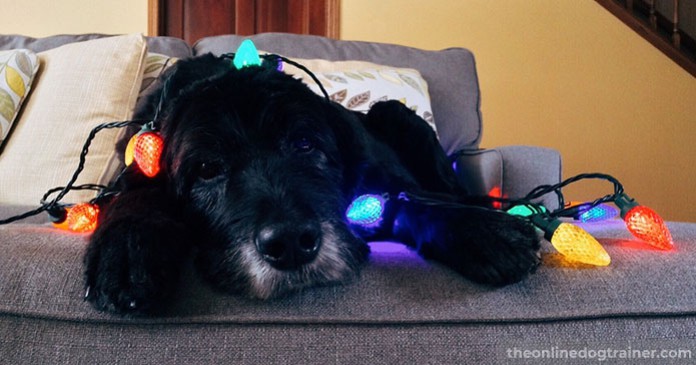
Twinkling lights and traditional poinsettia plants are beautiful household decorations. However, these decor items (and many others in your home) can put your pet at risk.
It’s important to set rules in your home about what types of decor you believe are safe according to your pups personality.
For example…
If you have a dog that chews things, poisonous plants and strings of Christmas lights would not be safe options. Instead, consider decorating areas of your home that are not accessible to your pet, such as your counter spaces of mantle place.
(Be aware: amaryllis, mistletoe, balsam, pine, cedar, and holly are among the most poisonous holiday house plants!)
If you do set out decor, always remember to unplug your lights, secure your Christmas tree, and remove breakable objects from where you pup can reach them in order to avoid an accident.
Rule #5 – It’s Better to Be Safe Than Sorry
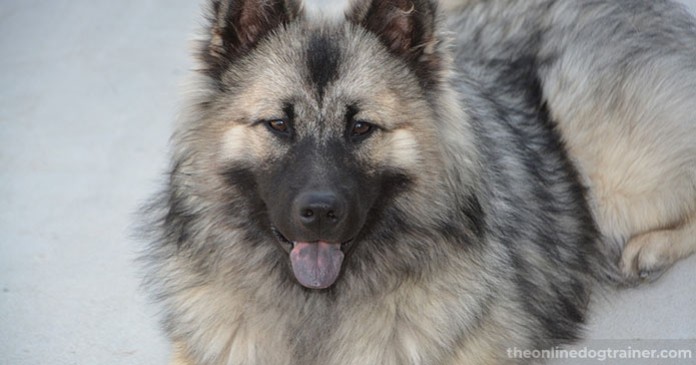
Yes…this may sound like a very vague rule. But I truly believe that when it comes to traveling, friends/family, food, decor, and everything else, it’s ALWAYS better to be safe than to be sorry.
In fact, I applaud all dog owners who go above and beyond to ensure their pets stay happy and healthy during the holidays—and all year long!
So what do I mean by this rule?
I simply mean that you should go with your gut instincts and do whatever it is that you need to do to ensure your pup is protected—whether it be limiting your decor or setting strict boundaries with friends and family members.
Much like a new parent of a baby would set rules for their child, you have every right to set rules for your furbaby—so don’t feel guilty about it! Even if you feel like you’re being a little over protective.
Going the Extra Mile for Your Pet this Season
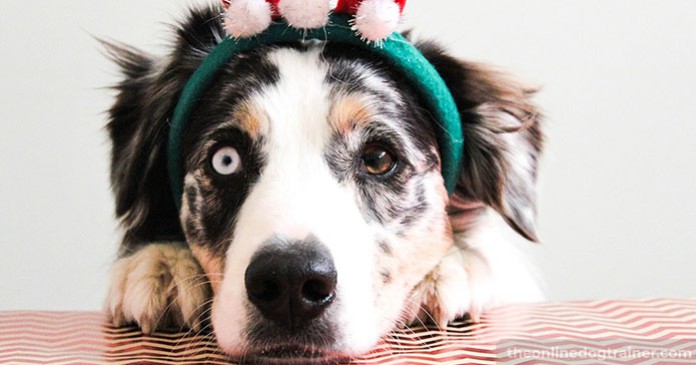
There’s a lot you can do to set your pup up for success during the holiday season. By far, the best thing you can do is to put a solid training foundation in place for your dog.
Doing so can help your pup safe in a variety of ways…such as mastering self-control so your dog doesn’t jump on the counter to eat your cookies or ensuring your dog stays relaxed and calm when new people enter your home.
If you’re looking for the perfect gift for your pooch this season, I want to recommend my program, The Dog Calming Code.
This program has helped me train over 88,000 dogs, and I guarantee it will help teach your pup how to calm down, relax, and listen when it matters most.
Or, if you currently have a puppy, I suggest my Puppy Coach training program that is geared towards younger dogs.
Here’s to a safe and happy season,

~Doggy Dan 🙂




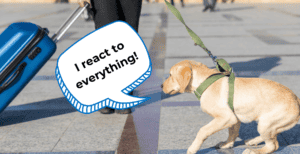
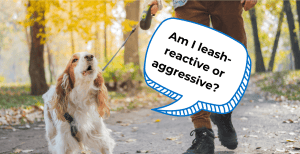
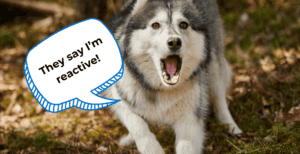
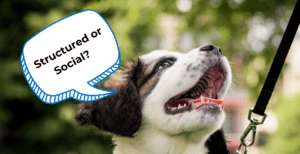
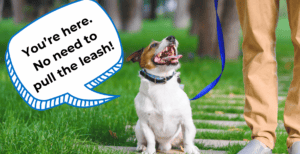
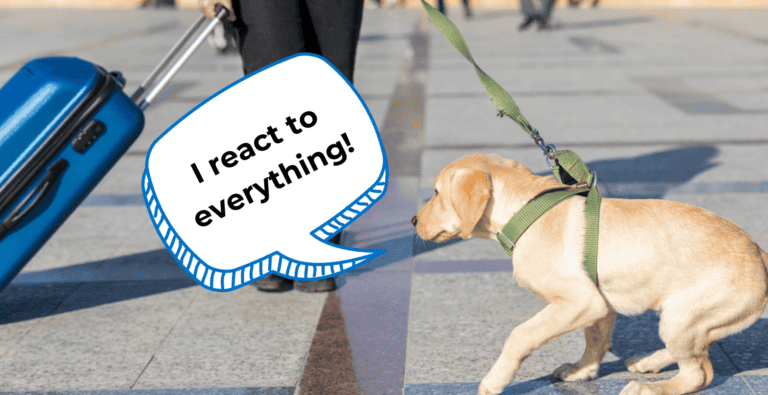
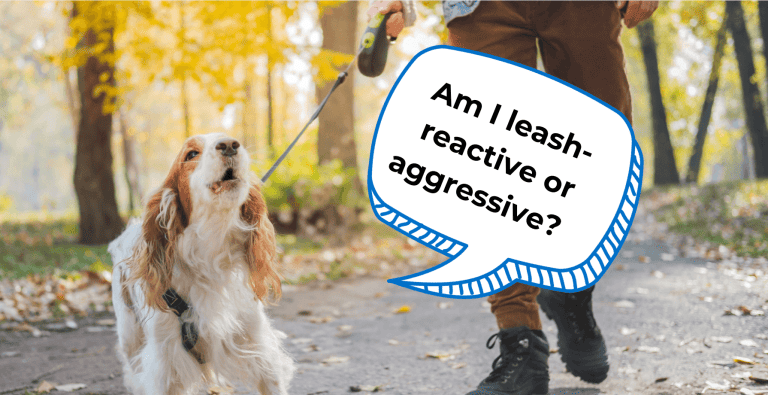
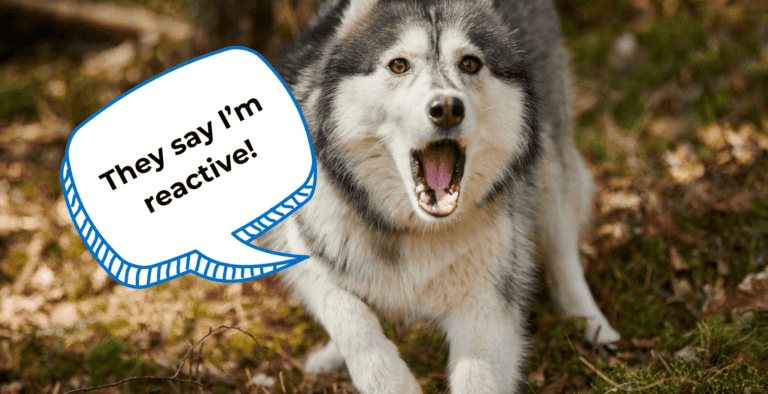

3 Responses
Thank you so much for reaching back to you. He is very smart so sometimes i think he is being spiteful and marking territory. it s hard with me not there 8 hrs a day.
Hi, Dan,
I have a 9 month old beagle. pure breed multi-color. I love him. Hes not potty trained. I work all day. He is in a crate for training for pottty training, He is holding it until i get home. He knows to go outside, but when he is inside and he drinks quick or eat hes doing it on the floor in the house. I used potty training pads when he was 8 weeks old because he only weighed 3 lbs so i had like a tent up pen for when i went to work. I have a 11 yr old golden hes awesome hes fine. the beagle wants to be the alpha male they are both not neutered. I need help. I live alone my husband passed away 3 months ago he was disabled and he couldn’t help me with him. I shouldn’t have got him starting with a puppy, but he wanted him so bad and we never owned a dog with that personality. I have to work only have weekends off. Hes very aggressive towards me and the golden. i paid for training but it was basic stuff. He is very smart he knew what to do before she taught him. Please help me to potty train that is my biggest problem thank you so much for listening
Hi Cathy,
Toilet training young dogs is something that can take a lot patience and consistency. The key to success is to set a really clear routine and regularly take your dog out to the toilet and run him through the correct procedure. If you can predict the time when he usually needs to go to the toilet then be really vigilant in taking him out at those times, making sure to praise him when he gets it right. Avoid waiting for him to alert you that he needs to go out, it’s up to you to set up a good toilet routine with him and being proactive is a much better approach. When he is indoors restrict him to a smaller are of your home where you are better able to supervise him, most accidents happen when owners are distracted or dogs can sneak off to another room. I have a free toilet training resource for puppies but the information can be applied to dogs as well. https://theonlinedogtrainer.com/potty-training-optin/
If you need help with his general behaviour, especially aggression, then my website TheOnlineDogTrainer.com shows you very clearly how to overcome this…maybe take a quick look…its a free trial for 3 days…all the best Doggy Dan